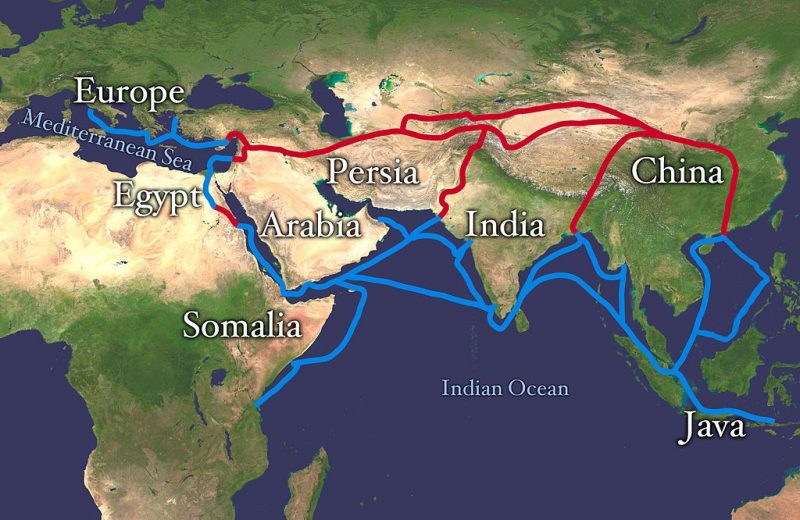
Many of us have heard of the Silk Road. The name conjures images of adventure, romance, luxury, wealth, conquest and intrigue. It was the route from China to India, Persia, Egypt and Europe by which silk was carried to market. In ancient times, China was known as the Land of Silk. That is where production of silk began some time before 3500 b.c. In fact, our word “silk” came from the Chinese word si. China is still the major producer of silk, producing about 3⅓ times as much as second place India.
Silk is a natural fiber, made by silkworms, the larvae of the Mulberry Moth (Bombyx mori) and a few other moths. The Mulberry Moth of China and the Ailanthus Moth (Samia Cynthia) of India are the only completely domesticated silk moths. The mature larvae spin cocoons to protect themselves in the pupa state (when they undergo metamorphosis, changing into adult moths). Silk is the thread that makes the cocoon. The cocoon is boiled to kill the pupa and loosen the thread, which is then unwound and reeled.
Silk is a smooth, shiny material. It is very strong, and exceptionally long fibers make it even stronger. It is also very fine. A single fiber is hard to see. Most silk threads are composed of several fibers. Silk textiles are strong and durable. They are used not only in clothing, but in parachutes, luggage, draperies and upholstery.
In bedding, silk has long been used in sheets and pillowcases. It is also used in cover fabrics for mattresses and foundations. Sometimes silk is the sole fiber in a mattress ticking or cover (as in the Natural Silk Elegance by BedInABox), but often it is blended with other fibers, such as wool (as in the World Luxury series by King Koil), bamboo (as in the Tempur-Contour Allura by Tempur-Pedic) or cashmere (as in Stearns & Foster’s Lux Estate and Lux Estate Hybrid collections).
Besides its strength, silk is a breathable fabric. It is also absorbent. The fibers wick moisture away to evaporate, keeping the surface of a mattress both dry and cool. Silk is also resistant to most acids, making it very durable. Silk has another benefit from a marketing standpoint. With the reputation of silk, just naming it among the component materials of a mattress lends a perception of luxury.
This entry was posted on Sunday, July 27th, 2014 at 4:33 PM and is filed under bedrooms, beds, fabrics, fabrics, mattress covers, mattresses, silk, upholstery . You can follow any responses to this entry through the RSS 2.0 feed. You can leave a response, or trackback from your own site.

Get New Post Notification via Email:

11 thoughts on “Silk”